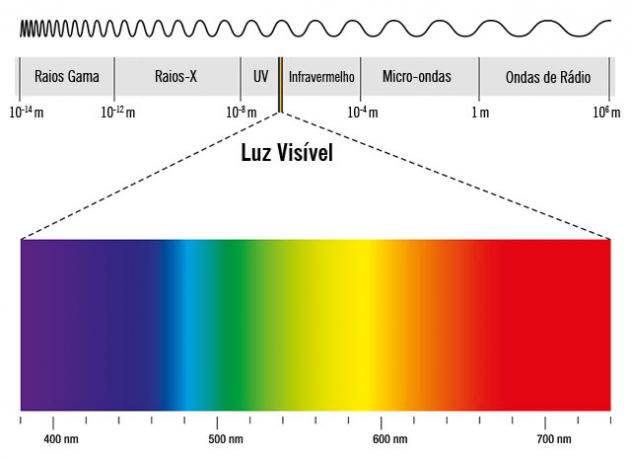The spherical mirror is any reflective surface shaped like a spherical cap.
To make a concave mirror, bend the mirror's reflecting surface inward. This modifies several characteristics of the mirror and the image formed by it.
Features of concave mirrors.
1. The center of curvature (the center of the sphere to which the mirror surface belongs) which, in the plane mirror, was at an infinite distance, is now closer to and ahead of the mirror.
2. The field of view, that is, the size of the scene seen by the observer, decreases in relation to the plane mirror.
3. The distance of the image increases in relation to the plane mirror.
4. The height of the image increases in relation to the plane mirror. That's why many makeup mirrors are concave.
Features of convex mirrors.
To produce a convex mirror, we curve out the mirror surface. This causes the following modifications to the mirror and the image it produces:
1. The center of curvature is now behind the mirror's reflecting surface.
2. The field of view increases in relation to the plane mirror. That's why this type of mirror is used in the rearview mirrors of some cars, as well as in stores, providing a greater angle of vision.
3. The distance of the image decreases in relation to the plane mirror.
4. The height of the image decreases in relation to the plane mirror.
Gaussian Sharpness Condition
The image of an object, formed by a spherical mirror, is not clear, as each point on the object corresponds to several points in the image.
Under certain conditions, spherical mirrors provide images whose lack of sharpness is not as perceived by the human eye, that is, the spherical mirrors under these conditions are almost stigmatics.
These conditions are called Gaussian conditions:
• the mirror must have a small opening angle (< 10º)
• incident rays must be close to the main axis;
• incident rays must be slightly inclined with respect to the main axis.
Do not stop now... There's more after the advertising ;)
By Kleber Cavalcante
Graduated in Physics
Brazil School Team
Optics - Physics - Brazil School
Would you like to reference this text in a school or academic work? Look:
CAVALCANTE, Kleber G. "Spherical Mirrors: How Are They Made?"; Brazil School. Available in: https://brasilescola.uol.com.br/fisica/espelhos-esfericos-como-sao-feitos.htm. Accessed on June 28, 2021.



